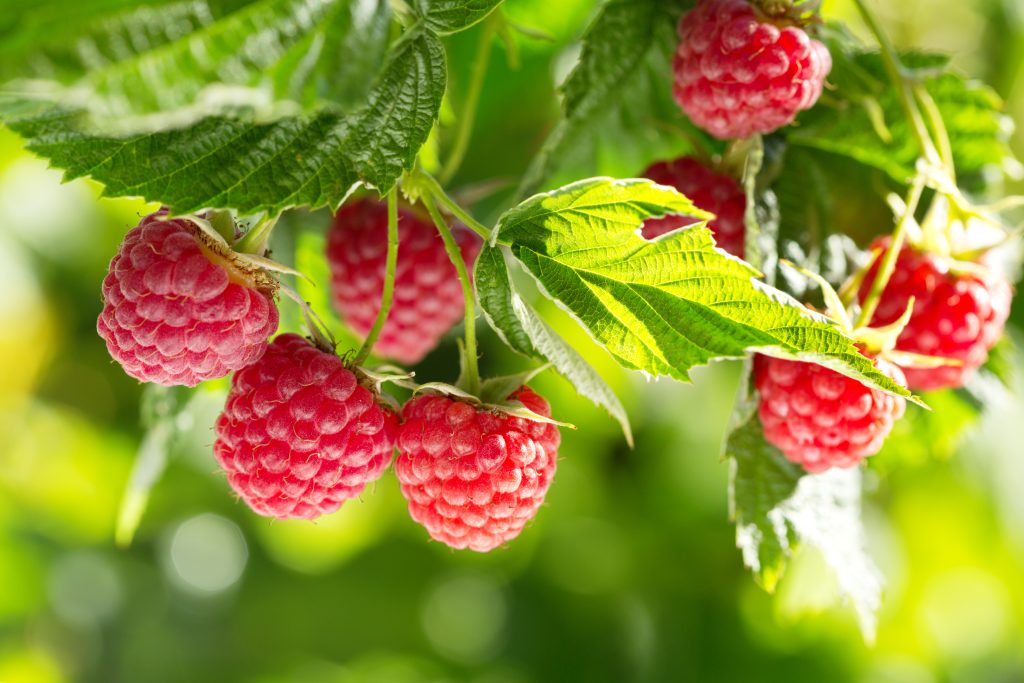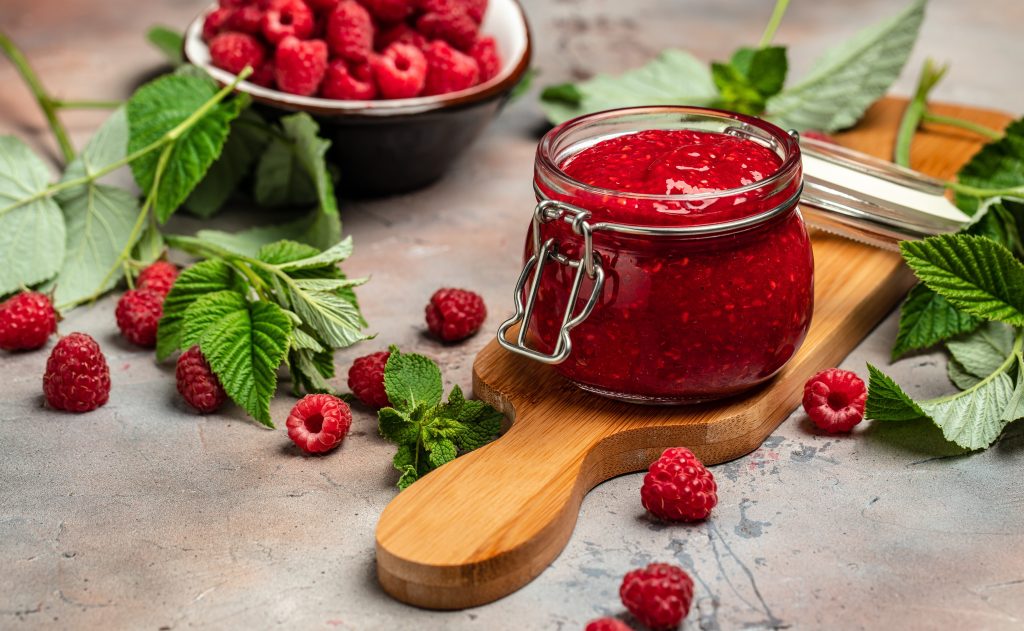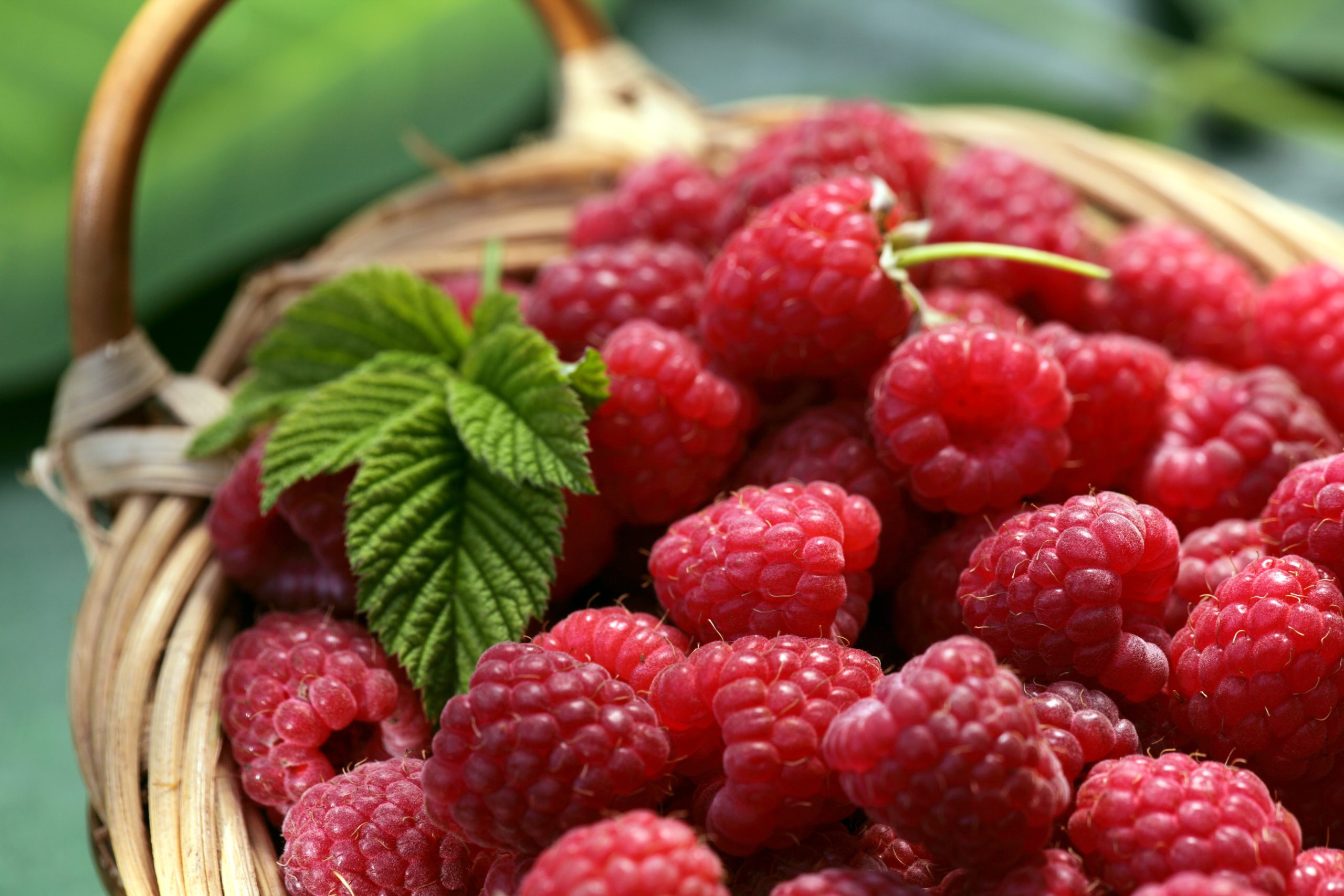Raspberries are a fruit that's known for being delicious and packed with nutrients. This article will explore the history and origin of the raspberry, the health benefits they offer, how to grow and store them, and various ways to enjoy them in your diet.
Table of Contents
What is a Raspberry?
The common red raspberry is a small, edible fruit belonging to the rose family (Rosaceae) and is botanically known as Rubus idaeus. It is a popular fruit in many parts of the world, known for its sweet, slightly tart flavor and vibrant red color.
Raspberries are believed to have originated in Eastern Asia and were later introduced to Europe in the 16th century. Today, they are widely cultivated in many world regions, including North America, Europe, and Asia.
The raspberry fruit is small, typically measuring 1-2 cm in diameter. It has a soft, delicate texture and is composed of many tiny individual drupelets that are fused. The fruit is typically bright red, although other cultivars may be yellow, black, or purple.
Raspberries have a complex flavor profile with a balance of sweetness and acidity. They are often described as having a tangy, fruity taste with a slight hint of sourness. When ripe, they have a rich, full-bodied flavor enhanced by their fragrant aroma.
Types of Raspberries
There are two raspberry varieties, each with its specific growing requirements.
- Summer-fruiting raspberries are more common and bear fruit on the previous year’s growth, producing a single crop during the summer, usually in June or July.
- On the other hand, ever-bearing raspberries produce berries on new canes and can produce a fall crop and fruit in the following summer.
They also come in different colors:
- Yellow raspberries (varieties like ‘Fallgold’)
- Purple raspberries
- Black raspberries
Growing Raspberries at Home
If you’re considering growing raspberry plants in your home garden, here are some things that you should know:
- All raspberry bushes are self-fertile; only one is needed to bear fruit.
- You can buy them as bare-root or as potted plants.
- Most thrive in cooler climates, while some varieties are summer-bearing.
- Apply mulch around the roots to retain moisture. They should be planted in well-drained soil with a pH between 6 and 7.
It is necessary to prune all raspberry bushes annually, even though they are perennials. Raspberry canes, which bear fruit for only two summers, are known as floricanes during their second year of growth.
In the first year, they are called primocanes and grow vegetatively before developing a brown bark and becoming dormant in winter. Fruit production continues year after year as new primocanes emerge, but it is essential to remove dead floricanes each year.

The History of Raspberries
Red raspberries have an extensive history. They are a fruit native to Asia and North America, and were gathered from the wild by the people of Troy. The Ancient Romans are thought to have spread raspberry cultivation throughout Europe. In medieval Europe, only the rich had access to these tasty berries.
Settlers brought cultivated raspberries from Europe to America, and the first commercial nursery plants were sold in 1771. George Washington also grew raspberries on his estate, and by 1880, approximately 2,000 acres were in cultivation across the nation.
Washington, Oregon, and California are currently the leading producing regions for red raspberries in the United States.
In Hellenistic Troy, raspberries were linked to fertility, and in the European Middle Ages, they were recognized as a women’s tonic and used for food and pigment. Native peoples of the Americas also recognized raspberries’ medicinal and spiritually-protective properties.
What Does a Raspberry Taste Like?
Raspberries are sweet and slightly tart when eaten raw, with a juicy and delicate texture. They have a distinct, bright red color and a complex flavor that combines sweetness with a slightly tangy taste.
When cooked, raspberries can become even sweeter and softer. They are often used in baking and desserts, such as pies, tarts, and sauces, where their sweet and tangy flavor pairs well with other ingredients.
How to Tell When Raspberries are Ripe
Knowing when raspberries are ripe can ensure that you select the best fruits and get the most flavor out of them. Here are some tips to help you determine when raspberries are ripe:
- Ripe raspberries are typically a deep, rich red color. Some varieties may also have a slight purplish tint. Avoid raspberries that are pale, yellowish, or even orange in color, as they are not fully ripe.
- Ripe raspberries should be plump, firm, and juicy.
- Ripe raspberries should have a sweet and slightly tart flavor. They may not be fully mature if they taste too sour or bland. If they’re a bit bitter, they may be too ripe.
- Avoid raspberries that are moldy, bruised, or mushy.
- It’s a good idea to inspect the bottom of the container for any signs of juice or mold, which could indicate that some of the fruits are overripe.
- Buy raspberries that are locally grown and in season (early spring).
- If you’re harvesting raspberries, a reasonable estimate of ripeness is when they slip easily off the stem.
- While you can leave some fruits at room temperature to ripen in time, you can’t do that with raspberries, so only pick them when they’re already ripe.
Are Raspberries and Blackberries Related?
Raspberries and blackberries are related, as both belong to the Rosaceae family. While they share some similarities, the two fruits have some primary differences, including their appearance, flavor, and growth habits.
One of the most noticeable differences between raspberries and blackberries is how their fruit is formed. Raspberries have a hollow core, while blackberries have a solid core. This difference in structure leads to another significant difference: how the fruit is harvested.
When you pick a blackberry, the torus (the central core that holds the individual drupelets) stays attached to the fruit, while the raspberry separates easily from the torus, leaving it behind on the plant.
Another significant difference between the two fruits is their flavor. Raspberries are typically sweeter and more delicate in taste, while blackberries are tart and slightly bitter. Blackberries also tend to have a firmer texture than raspberries, which are soft and tender.
Regarding growth habits, raspberries tend to grow in clumps and are often trained to grow on trellises. On the other hand, Blackberries grow on thorny canes that can reach up to 10 feet in length and typically grow along fences or hedges.
Can I Eat Raw Raspberries?
Yes, you can eat raw raspberries. Raspberries are often eaten raw and are a popular addition to smoothies, salads, and desserts. They are rich in nutrients like vitamin C, fiber, and antioxidants, making them a healthy and delicious addition to your diet.
However, it is essential to wash raspberries thoroughly before consuming them to remove any dirt or bacteria that may be present on the surface.
Cooking With Raspberries
Preparing Raspberries
Before using raspberries in a recipe, cleaning them properly is essential. Here’s how to do it:
- Rinse the raspberries gently in a colander under running water.
- Carefully remove any stems or leaves that are still attached to the berries.
- Pat the raspberries dry with a paper towel or a clean kitchen towel.
Cooking with Raspberries
Raspberries are versatile fruit used in various cuisines, from desserts to savory dishes. Here are some common ways raspberries are cooked:
- Baking: Raspberries are a popular ingredient in baked goods such as pies, tarts, cakes, and muffins.
- Sauces: Raspberries can be pureed as a sauce for meat dishes or desserts.
- Jams and Preserves: Raspberries can be preserved as jams and jellies, which work great as spreads for toast, scones, and biscuits.
- Beverages: Raspberries are excellent for making smoothies, cocktails, and mocktails.
Raspberries are a popular fruit in many traditional cuisines like French cuisine (pastries, tarts, and macarons), American cuisine (pies, cheesecakes, and cobblers), British cuisine (summer puddings and trifles) & Scandinavian cuisine (raspberry soup and cloudberry cream).

How to Store Raspberries
Raspberries should be refrigerated as soon as possible after picking or purchase. You can place the berries in a shallow container or on a paper towel-lined plate and store them in the refrigerator’s crisper drawer. The berries will usually last up to 3-5 days using this method.
You can also freeze raspberries for long-term storage. Put them on a baking sheet in a single layer and freeze until solid. Then transfer the berries to an airtight container or freezer bag and store them in the freezer. Frozen raspberries can last up to 8-12 months if stored properly.
Nutritional Benefits of Raspberries
Raspberries are a rich source of vitamin C and antioxidants, but they’re also packed in manganese, potassium, calcium, and vitamin K, which help maintain bone health. The good news is that, even if they’re sweet, they are low in sugar, making them an excellent alternative to unhealthy sweets.
Raspberries contain ellagitannins and anthocyanins, which may have cancer-fighting properties. Last but not least, they are high in dietary fiber, which helps promote good digestive health.
Raspberries Technically Aren’t Berries
While many people might think of raspberries as berries due to their small size and round shape, they are technically not actual berries. Instead, they are aggregate fruits, which means they are made up of small, individual units called drupelets.
Each drupelet contains a seed surrounded by a fleshy tissue, giving raspberries their characteristic texture and flavor. When these drupelets come together, they form the raspberry we know and love.
Actual berries are formed from a single ovary of a flower, and their seeds are typically embedded inside the fleshy fruit. Examples of real berries include blueberries, cranberries, and grapes.
Where to Purchase Raspberries
The best time to find fresh raspberries is in the summer, typically from June to August. During this time, raspberries are in their peak growing season and can be found at most grocery stores, supermarkets, and farmers’ markets.
Specialty food stores and gourmet markets may also carry fresh raspberries or raspberry products year-round, such as jams, preserves, and sauces. These stores may also have frozen raspberries, which you can use in baking or smoothies.

